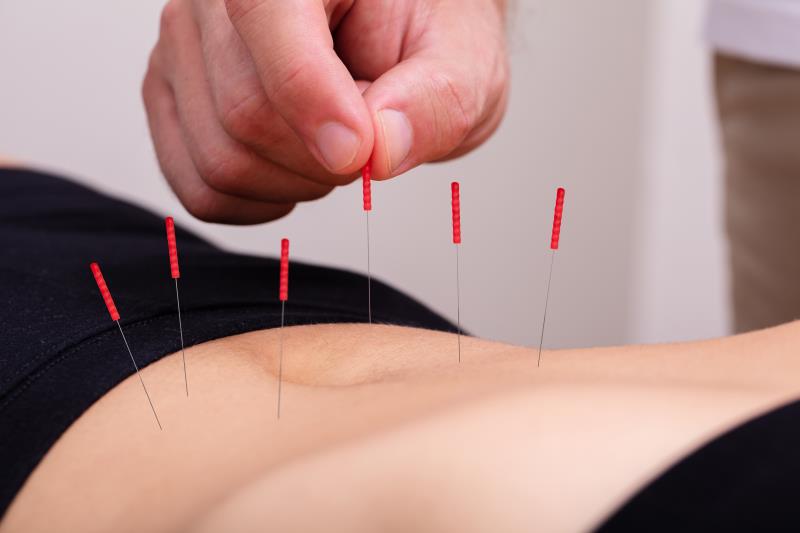
Thrice-weekly sessions of acupuncture may help reduce symptoms of postprandial distress syndrome (PDS), a subtype of functional dyspepsia, according to a study from China.
“[A]mong patients with PDS, 4 weeks of acupuncture compared with sham acupuncture resulted in increased patient-reported adequate relief and improved PDS symptoms and quality of life (QoL). The effects of acupuncture persisted through the 12-week follow-up without symptom relapse or rebound,” said the researchers.
This study conducted at five tertiary hospitals in China involved 278 patients aged 18–65 years with PDS (as per Rome IV criteria) who were randomized to undergo three 20-minute sessions per week of acupuncture (mean age 41.6 years, 72.5 percent female) or sham acupuncture (mean age 41.2 years, 62.1 percent female) for 4 weeks. During treatment and follow up, patients completed assessments on the severity of eight PDS symptoms (postprandial fullness, early satiation, upper abdominal bloating, epigastric pain, epigastric burning, nausea, vomiting, and belching). They were also assessed on QoL and anxiety and depression after the treatment period. Eighty-two percent completed treatment, 117 and 112 patients in the acupuncture and sham acupuncture groups, respectively.
Patients with dyspepsia symptoms due to serious diseases, had undergone prior gastrointestinal surgery, taking medications that could affect symptoms, or who had undergone acupuncture 1 month prior were excluded.
Estimated response rate (“improved” or “extremely improved” gastric symptoms from baseline) at week 4 was significantly greater in the acupuncture compared with the sham acupuncture group (83.0 percent vs 51.6 percent; difference, 31.4 percentage points, 95 percent confidence interval [CI], 20.3–42.5 percentage points; p<0.001). [Ann Intern Med 2020;doi:10.7326/M19-2880]
Acupuncture also eliminated the cardinal symptoms of PDS (severity scores of 0 for all three: postprandial fullness, upper abdominal bloating, and early satiation) at week 4 at a greater rate than sham acupuncture (27.8 percent vs 17.3 percent; difference, 10.5 percentage points, 95 percent CI, 0.08–20.9 percent; p=0.034).
The greater elimination rate with acupuncture vs sham acupuncture suggests “significant improvement in dyspepsia symptoms accompanied by a better overall relief,” noted the researchers.
The between-group differences were evident from week 2 for response rate and at week 4 for elimination rate. “[We also] found that after 4 weeks of treatment, the response rate and elimination rate persisted or slightly increased in the acupuncture group but decreased significantly in the sham acupuncture group,” they added.
Acupuncture recipients had greater improvement in total dyspepsia symptoms, postprandial fullness, early satiation, epigastric bloating, and belching scores, as well as QoL as per Nepean Dyspepsia Index (NDI) compared with sham acupuncture recipients at week 4 and all follow-up assessment points. Anxiety and depression as measured using the Hospital Anxiety and Depression Scale (HADS) only differed between acupuncture and sham acupuncture recipients at week 16.
Adverse event (AE) incidence was comparable in the acupuncture and sham acupuncture groups (10.1 percent vs 10.7 percent) and no serious AEs occurred. The most common AEs were hematoma, residual needling sensation after needle removal, needle sickness, and abdominal distension, all of which were mild and did not require intervention.
The researchers acknowledged the potential for bias due to self-reporting and noted the drawback presented by thrice-weekly sessions among patients who are employed. They called for further research into assessing the long-term outcomes of acupuncture in PDS.